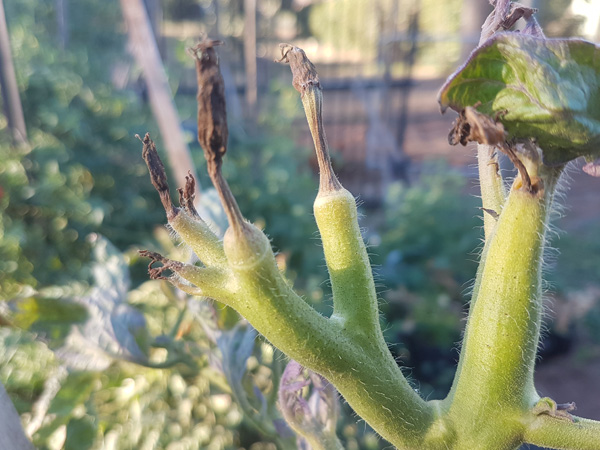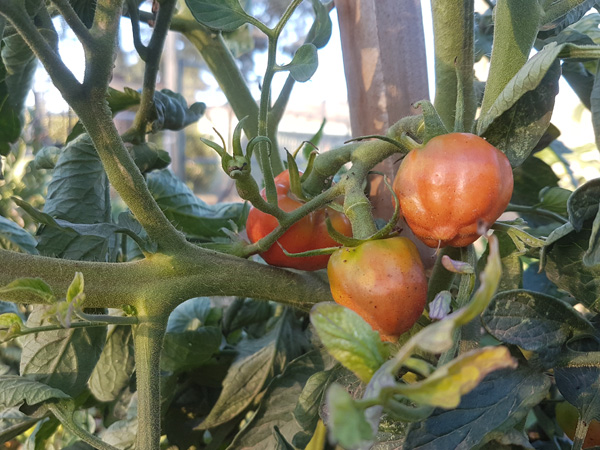Concerned but not alarmed – Biosecurity reminder
By Ian Towers
I’ve kept a veggie garden for many years. While I do experiment with new vegetables from season to season, I have my staples. Tomatoes are one of them. They make their annual appearance through my planting of seeds saved from the previous season, and those that are self-sown from the compost heap.
I followed the tradition around the Canberra district to plant out tomatoes after Melbourne Cup day to reduce the risk of frost. The wet, cool spring in southern New South Wales seemed to suspend the growth of my tomatoes, but in December everything took off. After Christmas the veggie patch was almost impenetrable. The warm weather favoured the tomato vine growth and fruit development, and I enjoyed some good harvests.

Tomato foliage affected by tomato big bud disease.
But towards the end of February, I noticed a change in the appearance of the tomato vines that I hadn’t seen before. Some of the terminal growth areas and leaves looked very stunted, with some resemblance to a twiggy witch’s broom.
I was very concerned about the altered growth habit, and wondered if my tomatoes had contracted a disease that could spell the beginning of the end for my crop. I could only imagine how, if this was a new disease, it could potentially affect commercial tomato growers.
I had to find out more about this tomato disease. I made a call to the Plant Health Australia Exotic Plant Pest Hotline – 1800 084 881 – and was promptly directed to Biosecurity NSW. I emailed them some snaps of my pathogenic tomatoes and within a day they had made a diagnosis: the culprit was tomato big bud, a phytoplasma disease that is spread by brown leafhoppers.

Tomato fruit affected by tomato big bud disease.
Biosecurity NSW advised me that the disease was common and widespread throughout south eastern Australia over the summer period. That was news to me – I thought I was an experienced gardener.
In hindsight, I shouldn’t be surprised that there was an increased risk of new pathogens infecting my veggie plot in the wake of the unseasonal conditions. NSW in 2016 started very dry throughout summer and autumn and it was the warmest year on record for the first six months. When winter arrived, it did so with vengeance, pouring with rain 20 per cent above the average amount across the state.
The wet conditions didn’t abate with the arrival of spring, which also meant cooler temperatures, resulting in the coldest spring in over 20 years. With the second warmest December on record for NSW, followed by above average temperatures in both January and February 2017, my tomatoes might have been enjoying good growth, but the preceding conditions were rife for pathogens.
In the face of climate change, and with it greater weather extremes, I guess I’m in for more surprises in my veggie patch. Happy gardening!



